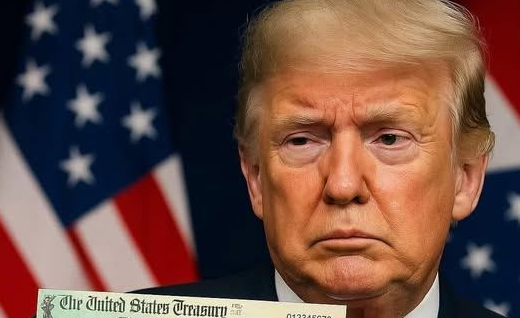Former President Donald Trump presented a fresh economic initiative on Truth Social, detailing a strategy to finance a countrywide dividend through revenue generated from tariffs. In his message, Trump explained that this program would deliver “a dividend of at least $2,000 per person (excluding high-income earners),” positioning it as a direct method to place national wealth back into the hands of American citizens.
Trump emphasized that the central concept involves applying tariffs on goods entering the country and then directing a share of those collected funds to people across the United States. He highlighted how this system would encourage foreign exporters to add greater value to the American economy while transforming those contributions into increased income for families.
Trump championed tariffs as an effective instrument for economic strength, declaring that those who oppose them fail to recognize their value. He referenced the robust financial markets and controlled inflation that marked his time in office as clear proof that his trade approach delivered meaningful advantages to the nation.
Although the proposal stands out for its ambition, many details surrounding the “American Dividend” remain open for clarification. Trump has not yet specified the payment distribution process, eligibility requirements, or the framework for administration and oversight. Possible delivery options could involve direct payments, tax credits, or reductions in costs for essential needs, although no official format has been confirmed.
Economic scholars observe that dividends supported entirely by tariff income represent a rare approach in contemporary American governance, even though comparable systems operate successfully in other places. The Alaska Permanent Fund Dividend, financed through revenue from natural resources, frequently serves as a strong example of sharing national earnings directly with residents.
Analysts point out that widespread tariffs can elevate prices for everyday goods and create challenges in international trade partnerships. At the same time, advocates maintain that such measures can strengthen homegrown industries, promote manufacturing within the country, and build greater independence from overseas suppliers.
For now, Trump’s initiative functions primarily as an inspiring vision and a campaign message rather than a fully developed legislative plan. Transforming it into an operational program would demand thorough design work, support from Congress, and comprehensive evaluation of its effects on the broader economy.
In essence, the concept aligns with Trump’s long-standing focus on directing national resources toward the well-being of American families. The practicality of a dividend funded by tariffs will become clearer through ongoing discussion, careful policy development, and the necessary political momentum.





